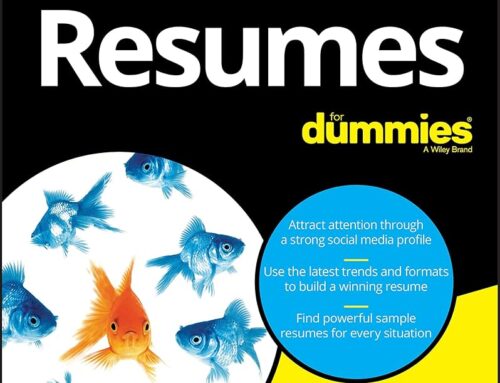Here’s the confusing thing about ATS (applicant tracking systems): there are many different systems (over 90), some older and some newer. It is difficult to know which system the company is using.
Here are some things to consider:
A good solid resume with great experience is always preferred to a well-formatted resume with mediocre experience.
Some people use a text-only bland resume that feeds in well through the ATS for their application and then use the nicely formatted one for the interview process. In today’s environment, I recommend removing all formatting (except for some bolding for your position title and font changes to your header) so that your resume has the best chance to get through the ATS. All this said, ATSs are improving their ability to read more challenging formats.
As a rule, these are the recommendations if you were to have your resume sail through system absolutely without a hitch.
- Include an Objective Header Statement/Title that matches the job description
- Stick to commonly worded headings- don’t get too creative
- Make the top of your resume shine so they want to keep reading- give the reader a tangible reason they want to hire you.
- Beef up competency/skill section to match the position
- Customize the resume for each job you apply to and use keywords but don’t be obnoxious about it.
- Pay close attention to their recommendations on how to submit your resume. Some recommend a Word doc and other say to submit a PDF.
- MS Word documents usually make it through the system easier than PDFs.
- Recruiters and Hiring Managers are looking to see if you have experience in the role they are recruiting for. Don’t waste your time applying for jobs you aren’t qualified for.
- When you can, apply directly on the company site. If you see the job on a job board (like Indeed or LinkedIn), try to locate the job on the company’s site and apply there.
Things that typically don’t do well going through ATS:
- pre-formatted resume templates
- pictures (I’ve heard Recruiters dislike pictures)
- text boxes
- graphics
- unusual fonts and colors- stick to: Georgia, Calibri, Cambria, Lucinda, Tahoma or Trebuchet, and only use black color
- columns- (use single column instead)
- underlining
- tables, special characters, special bullets (I use tables in my resumes- there isn’t agreement on this. But if you want to play it as safe as possible, you might want to eliminate.)
I follow most of these rules but sometimes it is a judgment call as to what you will sacrifice for a computer versus the human eye. I try to find a balance. Again, in today’s environment, I would just go with the text only.
For a creative position where you want to show your graphic flair, link to a resume or website displaying your work. Be sure to include the hyperlink.
Always try to find someone on the inside of the company (utilize LinkedIn) to get your resume through to the hiring manager. This is the best thing to do to get your resume out of the pile.


